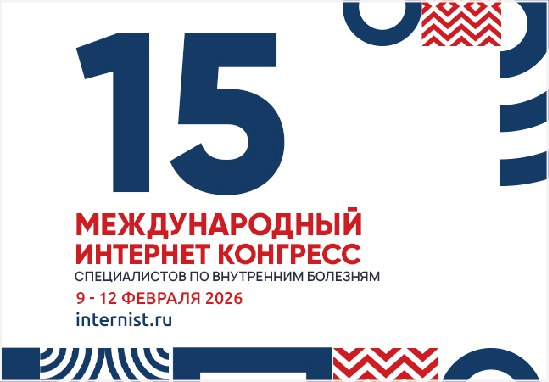Моэксиприл при артериальной гипертонии у женщин в постменопаузе
Аннотация
Материал и методы. В открытом, рандомизированном, несравнительном исследовании у 32 женщин (средний возраст 63,17±0,87 года) с артериальной гипертонией (АГ) продолжительностью в среднем 10,4±2,3 года в постменопаузе оценено влияние 16-недельной терапии моэксиприлом на артериальное давление (АД) офисное и при суточном мониторировании (СМАД), функцию сосудов и степень микроальбуминурии (МАУ) в утренней порции мочи.
Результаты. Целевых значений АД достигли 29 из 30 пациенток: 9 — на дозе моэксиприла 7,5 мг/сут, 13—15 мг/сут, 8 — при сочетании моэксиприла в дозе 15 мг с гидрохлортиазидом в дозе 12,5 мг, 2 — исключены из наблюдения в связи с побочными эффектами. Офисное АД снизилось со 164,33±1,45/94,50±0,89 мм рт.ст. до 133,5±0,57/81,5±0,65 мм рт.ст. При СМАД снизились дневные и ночные значения АД, уменьшилась величина пульсового АД и вариабельность АД. При пробе с реактивной гиперемией вазодилатация увеличилась на ~50%, при приеме нитроглицерина на ~40%; степень МАУ достоверно (p<0,001) уменьшилась с 28,28±3,94 до 8,10±1,00 мг/л.
Заключение. Терапия моэксиприлом оказывает выраженное антигипертензивное, органопротективное действие у женщин с АГ в постменопаузе и является метаболически нейтральной.
Ключевые слова
Об авторах
М. Г. ГлезерРоссия
Тел.: (095) 978-16-76
Э. Б. Тхостова
Россия
Тел.: (095) 978-16-76
М. А. Демидова
Россия
Тел.: (095) 978-16-76
Ю. Б. Белоусов
Россия
Тел.: (095) 978-16-76
Список литературы
1. Здоровье населения России и деятельность учреждения здравоохранения в 1999 г. (статистические материалы). МЗ РФ, Москва 2000; 210.
2. Оганов Р.Г., Масленникова Г.Я. Вклад сердечно-сосудистых и других неинфекционных заболеваний в здоровье населения России. Сердце 2003; 2(8): 58-61.
3. World Population Prospects: The 2000 Revision and World Urbanization Prospects: the 2001 Revision». Population Division of the Department of Economic and Social Affairs of the United Nations Secretariat – Washington DC 2002.
4. Gordon T, Kannel WB, Hjortland MC, et al. Menopause and coronary heart disease: The Framingham Study. Am Intern Med 1978; 89: 157-61.
5. Hu FB, Grodstein F, Hennekens CH, et al. Age at natural menopause risk of cardiovascular disease. Arch Intern Med 1999; 159: 1061-6.
6. Pines A, Fisman EZ. Hypertension in postmenopausal women – a special case, for special treatment. J Cyn Endocrinology. The Parthenon Publishing Group 2001; 15: 397-405.
7. Effects of estrogen or estrogen/progestin regimens on heart disease risk factors in postmenopausal women. The Postmenopausal Estrogen/Progestin Interventions (PEPI) Trial. The Writing Group for the PEPI Trial. JAMA 1995; 273: 199-208.
8. Stampfer MJ, Colditz GA, Willett WC, et al. Postmenopausal estrogen therapy and cardiovascular disease. Ten-year follow-up from the nurses’ health study. N Engl J Med 1991; 325(11): 756-62.
9. Grodstein F, Manson JE, Stampfer MJ. Postmenopausal hormone use and secondary prevention of coronary events in the nurses’ health study. A prospective, observational study. Ann Intern Med 2001; 135(1): 1-8.
10. Waters DD, Alderman EL, Hsia J, et al. Effects of hormone replacement therapy and antioxidant vitamin supplements on coronary atherosclerosis in postmenopausal women: a randomized controlled trial. JAMA. 2002; 288(19): 2432-40.
11. Writing Group for the Women’s Health Initiative Investigators. Risks and benefits of estrogen plus progestin in healthy postmenopausal women. JAMA 2002; 288(3): 321-3.
12. Gasse C, Hense HW, Stieber J, et al. Factors associated with differences in antihypertensive drug treatment: results from the MONICA Augsburg Population Surveys 1989/90 and 1994/95. Soz Praventiv med 2002; 47(2): 128-42.
13. Klungel OH, de Boer A, Paes AH, et al. Sex differences in antihypertensive drug use: determinants of the choice of medication for hypertension. J Hypertens 1998; 10: 1545-53.
14. Klungel OH, Paes AH, de Boer A, et al. Sex differences in the medication choice for hypertension in general practice. A study with written case simulations. Pharm World Sci 2000; 22(4): 140-6.
15. The Australian therapeutic trial in mild hypertension. Report by the Management Committee. Lancet 1980; 1: 1261-7.
16. Medical Research Council trial of treatment of hypertension in older adults: principal results. MRC Working Party. BMJ 1992; 304: 405-12.
17. Gueyffier F, Boutitie F, Boissel J-B, et al. Effect of Antihypertensive Drug Treatment on Cardiovascular Outcomes in Women and Men A Meta-Analysis of Individual Patient Data from Randomized, Controlled Trials. Ann Intern Med 1997; 126(10): 761-7.
18. Stamler J. US population data. Arch Intern Med 1993; 153(5): 598-615.
19. Burl VL, Whelton P, Roccella EJ, et al. Prevalence of hypertension in the US adult population: results from the Third National Health and Nutrition Examination Survey, 1988-1991. Hypertension 1995; 25: 305-13.
20. Kloner RA, Sowers JR, DiBona GF, et al. Sex- and age related antihypertensive effects of amlodipine Amlodipin Cardiovascular Community Trial. Amer J Card 1996; 77: 713-22.
21. ALLHAT Collaborative Research Group. Major outcomes in high-risk hypertensive patients randomized to angiotensin-converting enzyme inhibitor or calcium channel blocker vs diuretc. JAMA 2002; 288: 2981-97.
22. Wing LMH, Reid CM, Ryan P, et al. A Comparison of Outcomes with Angiotensin-Converting–Enzyme Inhibitors and Diuretics for Hypertension in the Elderly. N Eng J Med 2003; 348: 583-92.
23. Koch B, Stumpel M, Andersson O. Do hypertensive women respond differently to low doses of moexipril and hydrochlorthiazide? Hypertension1995; 25: 1383.
24. Koch B, Stumpel M, Andersson O. Low dose combination of moexipril and hydroclothiazide in treatment of hypertension. Pharmacol Res 1995; 31(Suppl): 322.
25. Lucas CP, Darga LL, Fox AA, et al. Long term efficacy and safety of moexipril in mild to moderate hypertension. J Hum Hypertens 1994; 8: 917-21.
26. Dickstein K, Aarsland T, Ferrari P. Comparison of the efficacy of the tree dose levels of moexipril versus placebo as add-on therapy to hydrochlorthiazide in рatients with moderate hypertension. J Cardiovasc Pharmacol 1994; 24: 247-55.
27. White WB, Whelton A, Fox AA, et al. Tric enter assessment of the efficacy of the ACE inhibitor, Moexipril, by ambulatory blood pressure monitoring. J Clin Pharmacol 1995; 35: 233-8.
28. Blacher J, Raison J, Amah G, et al. Increased arterial distensibility in postmenopausal women with and without hormone replacement therapy after acute administration of the ACE inhibitor moexipril. Cardiovasc Drugs Ther 1998; 12: 409-14.
29. Persson B, Stimpel M. Evaluation of the antihypertensive efficacy and tolerability of moexipril, a new ACE inhibitor, compared to hydrochlorthiazide in elderky patients. Eur J Clin Pharmacol 1996; 50: 259-64.
30. Hecker M, Porsti I, Bara AT, Busse R. Potentiation by ace-inhibitors of the dilator response to bradykinin in the coronary microcirculation - interaction at the receptor level. Br J Pharmacol 1994; 111: 238-44.
31. Valmadrid CT, Klein R, Moss SE, Klein BE.The risk of cardiovascular disease mortality associated with microalbuminuria and gross proteinuria in persons with older-onset diabetes mellitus. Arch Intern Med 2000; 160(8): 1093-100.
32. Pedrinelli R, Giampietro O, Carmassi F, et al. Microalbuminuria and endothelial dysfunction in essential hypertension. Lancet 1994; 344: 14-8.
33. Schmiede R, Grube E, Ruddel H, et al. Significance of microproteinuria for early detection of hypertension-induced end-organ damage. J Klin Wochenschr 1990; 68: 256-62.
34. Drayer JIM, Stimpel M, Fox A, Weber M. The antihypertensive properties of the angiotensin-converting enzyme inhibitor moexipril given alone or in combination with a low dose of a diuretic. Am J Ther 1995; 2: 525-31.
35. Stimpel M, Koch B. Antihypertensive treatment in postmenopausal women with hypertension and obesity: moexipril versus atenolol. Am J Hypertens 1996; 9: Abstract I17.
Рецензия
Для цитирования:
Глезер М.Г., Тхостова Э.Б., Демидова М.А., Белоусов Ю.Б. Моэксиприл при артериальной гипертонии у женщин в постменопаузе. Кардиоваскулярная терапия и профилактика. 2005;4(1):14-19.
For citation:
Glezer M.G., Tkhostova E.B., Demidova M.A., Belousov Yu.B. Moexipril in postmenopausal women with arterial hypertension. Cardiovascular Therapy and Prevention. 2005;4(1):14-19. (In Russ.)
























































